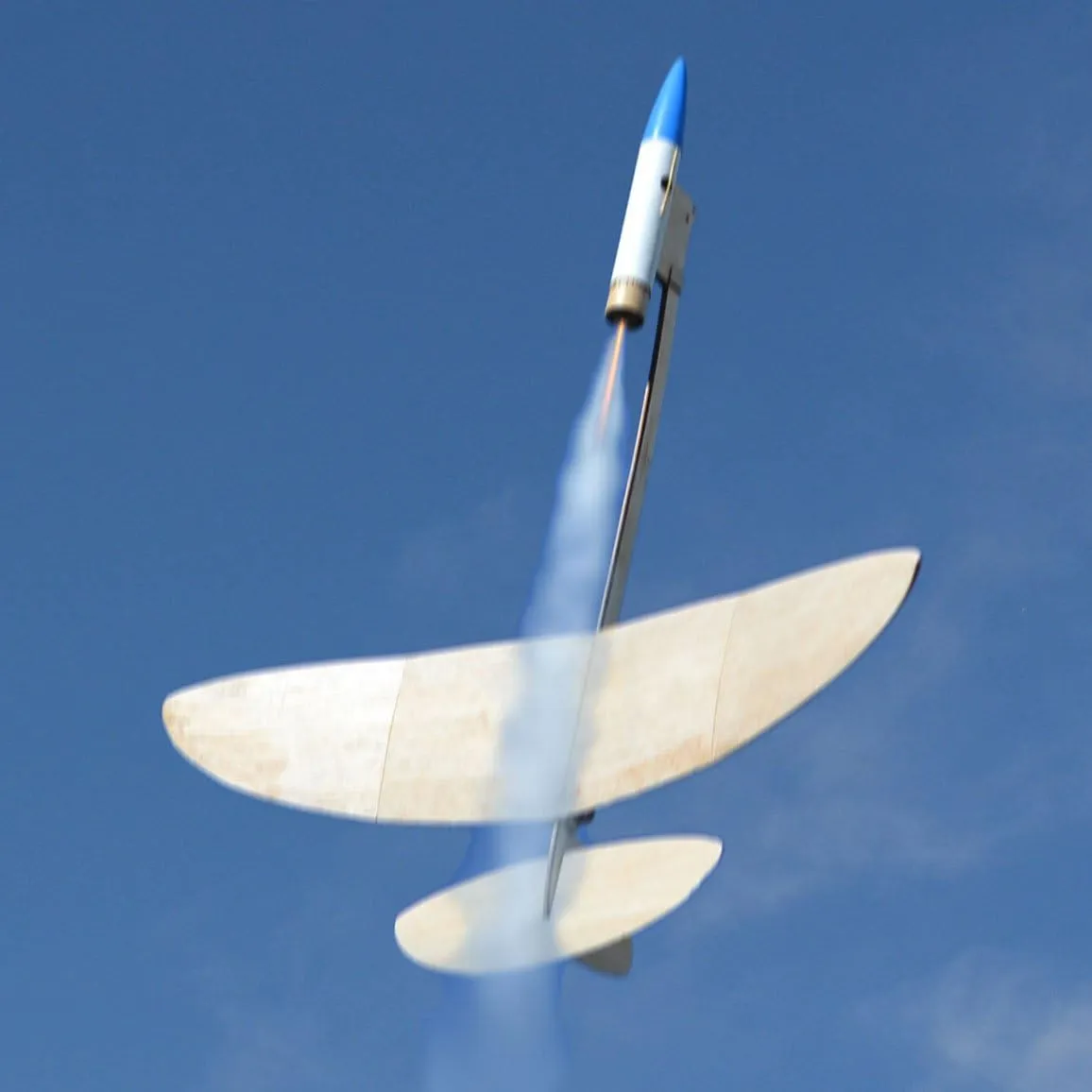- Launches to 200 feet (61m) on "A" size rocket motors
- Transitions from a rocket to a glider by a sliding wing mechanism
- Very efficient glider - soars like an eagle
- Fun and educational
The Cirrus Breeze is a rocket glider kit; which means that it goes up as a model rocket, and comes down in one piece as a glider. What makes it transition from a rocket into a glider? In this case, the wing is on a slide box and can move along the fuselage boom. At launch, the wing starts out being in an aft position. This is what allows the rocket to boost straight when it lifts off from the pad. When the rocket reaches its peak altitude, the ejection charge in the motor fires off and burns a tiny thread. This thread is what holds the wing in the rear position. With the thread released, a rubber band pulls the wing, and it slides forward along the fuselage boom to the front position.Once it is in glider mode, the model soars like an eagle. It is designed for competition, so it is very efficient. This rocket glider is so ingenious, it should have been patented. The fuselage boom has a slight curvature in it that induces a positive angle of attack when it slides forward into the glide position. This positive angle of attack is necessary for the glider to pull out of a dive, which occurs when it transitions from a ballistic rocket trajectory into a nice flat glide. In technical terms: when the wing is in the boost position, the wing is at a zero degree angle-of-attack, which is perfect for a nice straight up boost when the rocket motor is firing. That is the lowest-drag configuration, so you get a great high-altitude launch. When the wing slides forward, because of the curvature of the fuselage boom, it moves to a position where it is at a 3-degree angle of attack compared to the horizontal tail on the back end of the glider. This difference is necessary for the glider to pull out of a dive. This is a kit, and assembly is required. Assembly instructions are on DVD. Requires a rocket launch pad, model rocket motors, and a controller to ignite the rocket engine.












